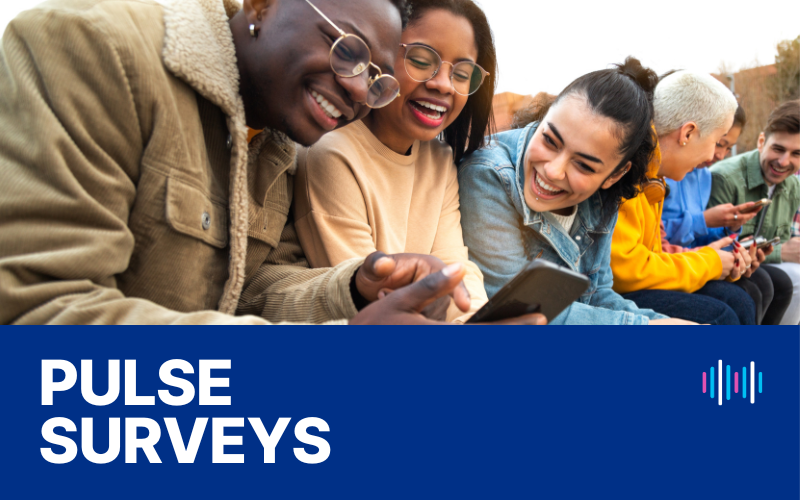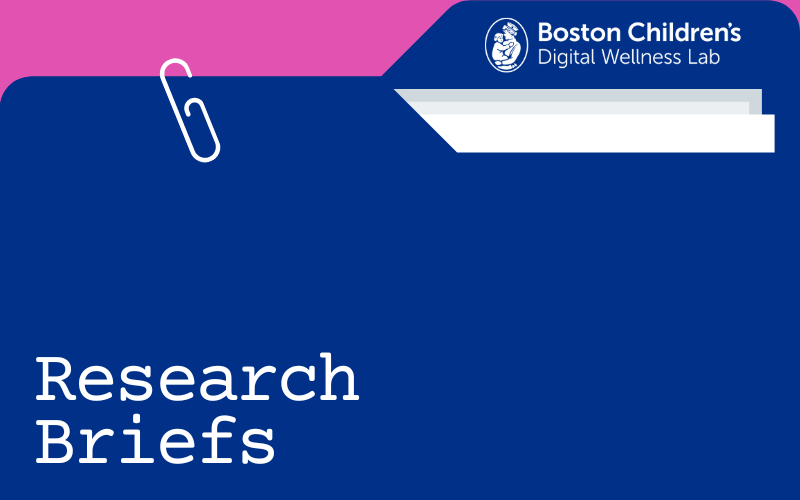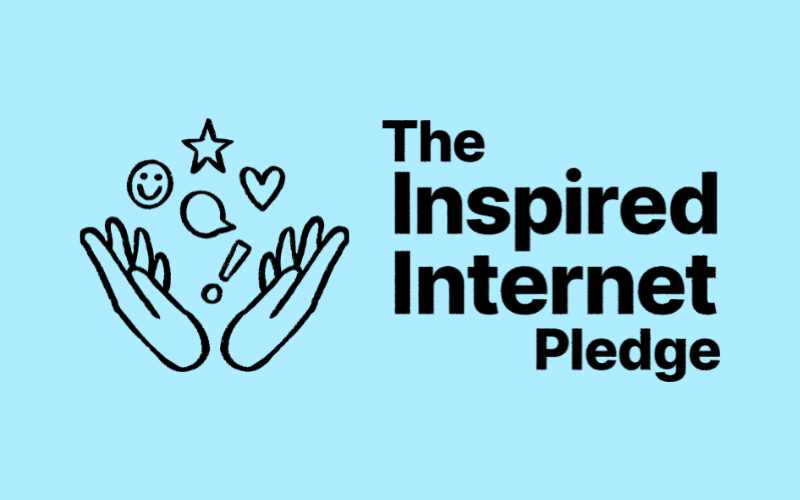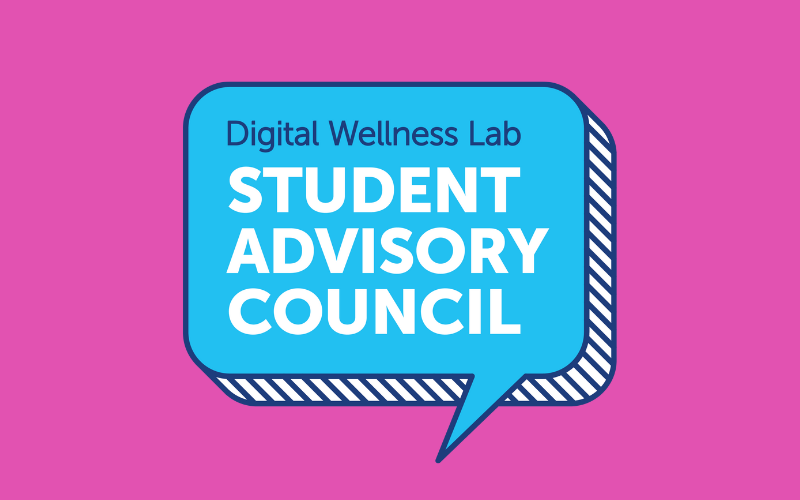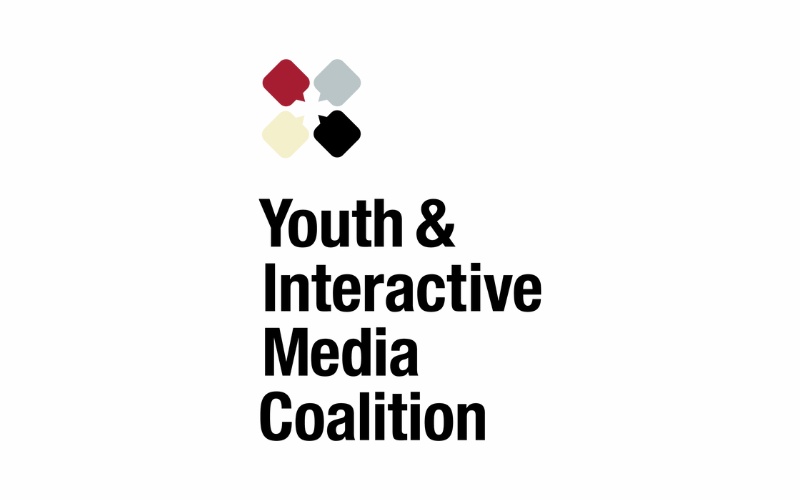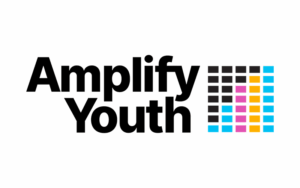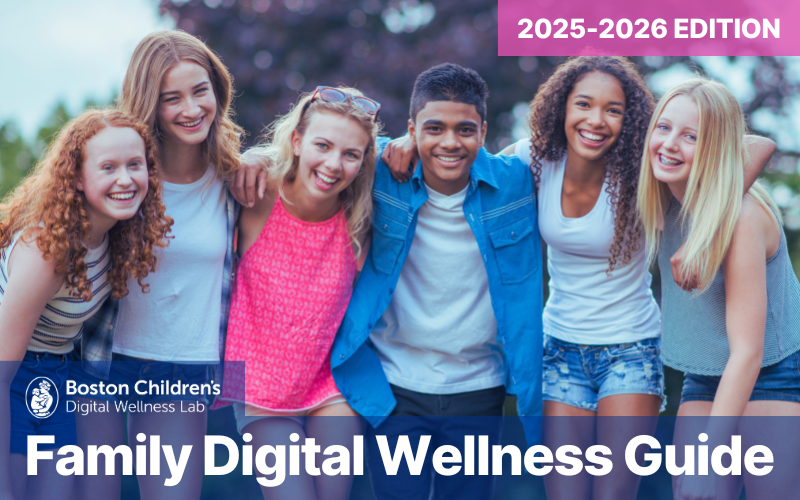Our 2023-24 Family Digital Wellness Guide is a valuable resource for families with children of all ages
Our 2023-24 Family Digital Wellness Guide is designed to provide parents and caregivers with information and guidance based on clinical evidence and scientific research to help them raise healthy, smart, and kind children in our increasingly digital age. In it, we discuss both the positives and negatives of digital media use and provide strategies and guidance for parents and caregivers of children from birth through young adulthood.
We’ve created this toolkit to help you and your team share our Guide without having to do a lot of heavy lifting. In it you will find:
- Content for your social media, email, and newsletter
- Style guide, including brand colors and logos
- Key messaging, including boilerplate and attribution
If you have questions or suggestions for how we can improve our Family Digital Wellness Guide, please contact us at dwl@childrens.harvard.edu
Go To GuideSocial Media

Post Copy
Parents, you are not alone! If you’re feeling concerned, confused, or guilty about your decisions around your children’s use of screens and interactive media, we suggest checking out the 2023-24 Family Digital Wellness Guide by the Digital Wellness Lab at Boston Children’s Hospital and Harvard Medical School.
In the Guide, you’ll find actionable, research-based guidance to help you address your child’s digital wellness at all ages — from birth to young adulthood — and create habits and expectations around media use that work for you, your children, and your family.
Link
Digital Wellness Lab Family Digital Wellness Guide
Hashtags
#parenting #parentingtweensandteens #socialmedia #parentingsupport #wellness #digitalwellness #health #healthykids #healthyfamilies #screentime
Please tag us!
Linkedin: @digital-wellness-lab
Facebook: @digitalwellnesslab
YouTube: @digitalwellnesslabatboston208
Static Images






Dear [First],
If you’re like most parents, you’re locked in a daily battle with your kids over screen time.
If you’re feeling concerned, confused, or even guilty about your decisions around your children’s use of screens and interactive media, we’re here to share the good news: You are not alone!
Rather than take an “all screen time is bad” approach, our friends at the Digital Wellness Lab at Boston Children’s Hospital recommend that instead of worrying about how you’re handling your child’s technology use, ask yourself, “How can I help my child utilize interactive media in a way that creates a positive effect on their overall mental and physical health?”
The Lab has recently published their updated 2023-24 Family Digital Wellness Guide. In it, you’ll find evidence-backed guidelines and best practices for screen use by kids at every age, a comprehensive glossary of digital media terms, other helpful resources.
We hope you’ll check out this valuable resource!
Go To Family Digital Wellness GuideAlternative Image

Newsletter
Help your kids find a healthy balance between #screentime and #IRL
To help parents and caregivers locked in battle with their kids over screen time, our friends at the Digital Wellness Lab at Boston Children’s Hospital recently published their 2023-24 Family Digital Wellness Guide. In it, you’ll find evidence-backed guidelines and best practices for screen use by kids at every age, a comprehensive glossary of digital media terms, other helpful resources.
Images
Guide (main image)

Birth to Preschool

Grade School to Tween

Teen – Young Adult

Key Messaging
The Digital Wellness Lab’s 2023-24 Family Digital Wellness Guide provides research-backed insights and guidance for digital wellness for youth at all “ages & stages”:
- Birth-Preschool (0-5 years)
- Grade School-Tween (6-12 years)
- Teens & Young Adults (13-22 years)
Each section of the Family Digital Wellness Guide includes:
- Science Says: A short overview of the developmental hallmarks of each “age & stage”.
- Best Practices: Guidance drawn from clinical evidence and scientific research for parents and caregivers in supporting their children’s healthy and productive relationships with media and technology.
- Additional Resources
Also in the Guide:
- Glossary: A resource containing key terms and slang related to technology, mental health, and digital wellness.
- References: Research to support the guidance in our Family Digital Wellness Guide.
- Resources: A list of external resources to help parents and caregivers navigate the issues surrounding digital wellness.
The Digital Wellness Lab at Boston Children’s Hospital studies the positive and negative effects of the digital media that young people — from birth through young adulthood — use and how they use them.
We define digital wellness as a positive state of mental, physical, and social-emotional health pursued through intentional, authentic, and balanced engagement with technology and interactive media.
With technology constantly evolving, we understand that parents and caregivers may feel concerned, confused, or even guilty about their decisions around their children’s use of screens. We recommend that instead of worrying about how you’re handling your child’s technology use, ask yourself, “How can I help my child utilize interactive media in a way that creates a positive effect on their overall mental and physical health?”
Because we know from our research that technology and digital media, when used with intention, can support well-being, we have designed this guide to empower families as they navigate their way through the ongoing process of intentional engagement with these powerful tools, both online and off.
This guidance is found in our Guide. If you use it in your content, please make sure to attribute the Digital Wellness Lab at Boston Children’s Hospital.
Birth – Preschool (0-5 years)
For children under 18 months, try to limit the use of digital devices and media to video chatting with family and friends.
For toddlers, screen time can be expanded to include watching child-centered programming (see recommendations below for evaluating media) with an engaged parent or caregiver when possible.
For children ages 3-5, receptive screen time (such as watching videos) should be limited to their attention span for each viewing, and no more than 2 hours total per day.
Grade Schoolers – Tween (6-12 years)
For grade-schoolers, screens should be used in moderation, with purpose, and in balance with time spent on a variety of non-screen activities like physical activity.
For pre-adolescent “tweens,” continue to monitor and guide their use of screens and set clear expectations and boundaries to prepare them to transition into more independent digital media use as teenagers.
Teens & Young Adults (13-22 years)
Parents should support their teens’ and young adults’ media boundaries, but intervene when necessary to help them stay safe and healthy online while building skills for lifelong digital wellness.
Use this copy when describing the work of the the Digital Wellness Lab:
The Digital Wellness Lab at Boston Children’s Hospital is a nonprofit research center seeking to understand and promote positive and healthy digital media experiences for young people, from birth through young adulthood.
Please use this attribution when sharing content provided in our Guide, from our website, or in this toolkit:
The Digital Wellness Lab at Boston Children’s Hospital
Digital Wellness Lab Brand Colors
Boston Blue
Hex #003087
DWL Blue
Hex #00c0f3
DWL Pink
Hex #e252b1
DWL Green
Hex #58d17a
DWL Lavender
Hex #9489bf
DWL Yellow
Hex #ffd028

